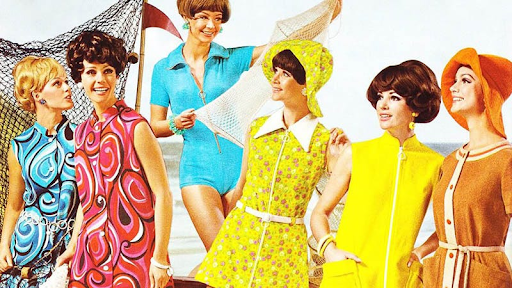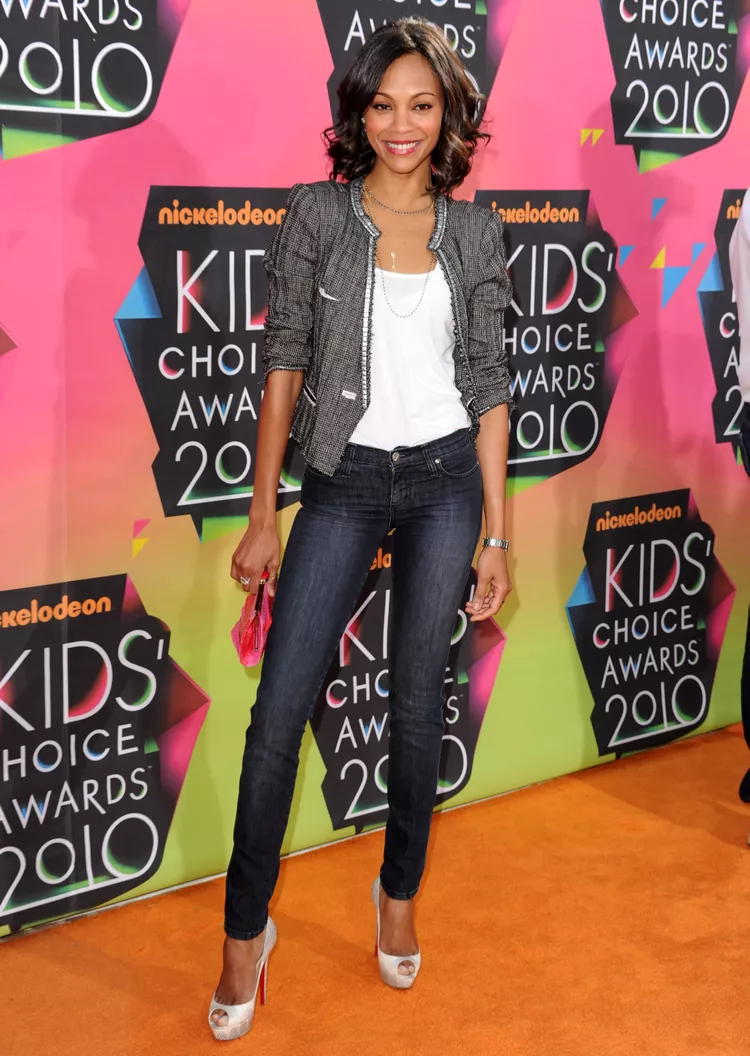The Evolution of Fashion: How Fashion Trends Come and Go, Only Changing Slightly
- BY DAKALO NEKHUMBE
- Dec 18, 2024
- 4 min read
Updated: Dec 21, 2024

Fashion trends come and go, what is considered fashionable today may not be considered fashionable a few years from now. A look through fashion eras attests to the fact that style changes, but that it also remains the same.
From flared jeans making a comeback to the timeless appeal of little black dresses, the evolution of fashion tells a story of reinvention. But have you ever wondered why certain styles seem to resurface with only minor tweaks? Let’s explore the cyclical nature of trends, how they’re influenced by culture, and why some pieces stand the test of time while others fade away.
Here is somewhat of a look book through fashion trends that have come and gone, starting in the 60s.
Swinging sixties: 1960s fashion
1960s fashion was very experimental in that it challenged the norms of men and women’s fashion. Women began to wear pants more often, challenging societal norms and defying convention. Culottes grew popular as a result. Bell-bottoms were worn by both men and women and often paired with a shirt for men and a t-shirt for women.
Bell-bottoms were a characteristic quality of hippie dress style, which incorporated tie-dyed t-shirts and headbands from time to time. The sixties also featured the invention of mini skirts by Mary Quant, bright neon coloured clothing, which was seen in the bright dresses of the time and go-go boots. Go-go boots were functional, they were a very small block heeled boot. Nancy Sinatra’s “These boots are made for walking” highlights how boots were a fashion statement and just how functional they were.
Advertisement
The 70s
The 1970s marked an influential moment in the evolution of the hippie aesthetic. This era amplified the vibrant, bright-coloured clothing that was once exclusive to women’s fashion. In a bold departure from previous decades, both men and women embraced a kaleidoscope of colours, making the 1970s an expressive time for fashion. 1970s fashion exudes a groovy disco look to it.
This can be seen in the exploring of different coloured suits among men. There was a notable trend towards unisex fashion, making men and women’s clothing similar and interchangeable. This is evident in the flared pants and bell-bottom jeans, the peasant blouses, tunics, and platform shoes. Elements of 1970s style can be seen in 2024 with the return of platform shoes, as can be seen with platform chunky Mary Janes, chunky loafers and the Versace Medusa Aevitas platform pumps. Elements of different ages can be seen in contemporary fashion.
Advertisement
The 80s
The 1980s marked a departure from the flared pants and bell-bottoms that defined the 1970s. This era embraced a rather informal and casual aesthetic. Acid wash jeans, neon-hued clothing and bright prints defined this era. Notable clothing items included baggy pants, sweatpants, leggings, sneakers and denim jeans and jackets. The 1980s featured the growth of unisex sweaters and t-shirts.
Advertisement
90s fashion
The popular sitcom ‘Friends’ frames much of the fashion aesthetic of the 90s. From Monica Geller’s office siren look, to Phoebe Buffay’s cottagecore aesthetic and Rachel Green’s girly aesthetic of plaid skirts, the show’s characters helped influence the 1990s fashion aesthetic.
These outfits could easily be mistaken for outfits worn in 2024. The influence of the show’s characters can be seen much on social media apps under “get ready with me” videos which feature Rachel Geller, Phoebe Buffay and Monica Geller’s as inspo for the outfits. Popular fashion styles included the preppy aesthetic that was featured in the movie Clueless. The preppy look is characterised by matching blazers and plaid skirts. The casual looks featured vintage floral dresses, straight leg jeans and dungarees.
Advertisement
Y2k Fashion
One of the first outfit ideas that come to mind when considering Y2k fashion is the low rise jeans paired with a crop top. If ever there was a staple outfit to define the y2k era this pairing would be it. Along with the velour tracksuits that made an appearance in many y2k movies. Notable clothing items consisted of mesh tops, shiny and bedazzled tops, denim mini skirts, and baby tees. Brittany Spears comes to mind when I think of a person can be associated with y2k fashion.
Advertisement
2010s
The 2010s were recognised by skinny jeans which held a firm grip on the fashion of the time. Skinny jeans were stylish pants that could be dressed up, by wearing heals or dressed down for a more casual look with chunky sneakers. Other notable fashion items that dominated this time were the chunky necklaces, chokers, croptops, peplums – this could either a peplum dress or a peplum top. The inspiration for some of the 2010s fashion seems to have been from the 1980s, as can be seen in how popular coloured jeans were.
Advertisement
Contemporary fashion (2020s)
Contemporary fashion is a blend of different eras of fashion. It takes elements from different fashion eras and combines them to form this new style. The sixties is incorporated in the return of the culotte pants and the bright coloured clothing that dominate the stores. Flared pants have made a massive comeback, this is seen in the younger generation incorporating them in their style.
The mini skirt never goes out of style, different derivatives of it come out every season. The 2000s low rise jeans have been making a steady comeback in recent times, and the platform aesthetic of the 2000s has also become a beloved fashion statement as seen in the platform flipflops, platform loafers. The cottagecore aesthetic traces its beginnings from the Victorian era except the dresses no longer require the heavy undergarments.
Advertisement
Fashion’s cyclical nature stems from its deep ties to culture, nostalgia, and the balance between past and present. Certain styles resurface with minor tweaks because they evoke familiarity while adapting to modern tastes, ensuring their timeless appeal. Designers often draw inspiration from cultural movements and historical moments, reinterpreting them to reflect contemporary values. Staples like trench coats and denim endure because of their versatility and practicality, while overly niche trends fade quickly. Ultimately, fashion is a reflection of our collective history, evolving to honor the past while innovating for the future.











































































